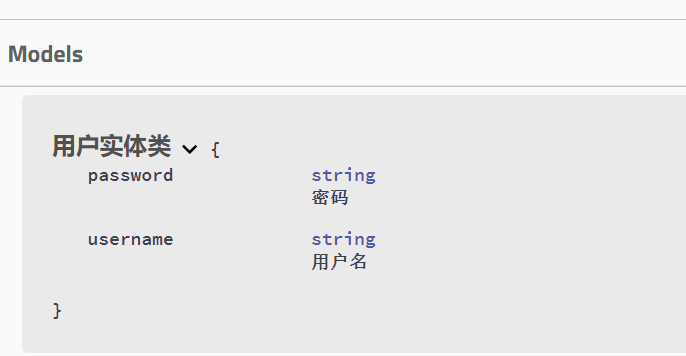
Swagger
简介
- 号称世界上最流行的Api框架。
- Restful Api 文档在线自动生成工具 -> Api文档与Api定义同步更新
- 直接运行,可以在线测试API接口;
- 支持多种语言:Java,PHP…

依赖
1 | <dependency> |
集成
创建SpringBoot项目
添加依赖
编写HelloController
配置SwaggerConfig
1
2
3
4
//开启Swagger2
public class SwaggerConfig {
}测试运行。默认URL:http://localhost:8080/swagger-ui.html
配置
配置Swagger依据Swagger的bean实例Docket;
配置Docket Bean
先配置一个默认的配置
1 |
|
- 创建一个SwaggerConfig,使用**@Configuration注解和@EnableSwagger2注解**
- 配置Bean Docket。返回值为new Docket(DocumentationType.SWAGGER_2)。
- 这样就完成了默认的配置。
apiInfo() 自定义Swagger页面介绍部分内容
1 |
|
使用Docket的方法apiInfo传入一个自定义的ApiInfo对象,即可实现自定义;
自定义的ApiInfo对象可以调整的内容:
- 标题
- 描述
- 版本
- team链接
- 联系方式 new Contact(名字,连接,Email)
- 许可
- 许可Url
- …

select() 配置扫描接口的方式
使用方式:
1 |
|
apis() 通过类与方法的包或注解选择扫描的方式
- RequestHandlerSelectors.basePackage(“com.xxx.controller”):通过包方式扫描接口;
- RequestHandlerSelectors.withClassAnnotation(Controller.class):通过类上的注解配置要扫描的类;
- RequestHandlerSelectors.withMethodAnnotation(GetMapping.class):通过方法上的注解配置要扫描的方法;
- RequestHandlerSelectors.any():所有;
- RequestHandlerSelectors.none():都不扫描。
paths() 通过url配置扫描的方式
- PathSelectors.ant(“/hello/**“):配置扫描的指定路径;
- PathSelectors.regex(“.*”):通过正则配置扫描的路径;
- PathSelectors.any() 所有
- PathSelectors.none() 没有
enable(false); 默认关闭Swagger页面
可以配置是否启用Swagger,
- true,Swagger不能在浏览器访问;
- false,Swagger可以在浏览器访问。
1 |
|

groupName(“第一个组”)分组命名
1 |
|
为当前组命名,影响页面右上角切换组的时候显示的名字。
配置API文档分组
一个Docket就表示一个分组,只需要配置多个Docket,并且都放进Bean,就可实现多个分组。
一个Docket可以配置多个内容,包括页面显示内容、扫描的类或方法、是否开启等,各个Docket之间互不影响。
(在实际情况下,每个部分都配置一个Docket,都可以配置不同的页面显示内容。)
当一个Docket的enable处于false,其他的处于true,则页面不显示处于false的Docket。
代码
1 |
|
效果

通过注解添加注释
@ApiModel、@ApiModelProperty为实体类添加注释
1 |
|

其他注解
@Api:
将一个类标记为Swagger资源(Swagger不会因为这个扫描这个类)。可以指定在文档中类所在的路径。待完善..@ApiImplicitParam:
@ApiImplicitParams:
@ApiOperation:声明API资源中的单个操作。
1
2
3
4
5
6
7
8
9
10
public String hello(){
return "hello";
}
@ApiParam:为操作参数添加注释
1
2
3
4
5
6
7
8
9
public String hello(
String username){
return "hello";
}
@ApiResponses、@ApiResponse:描述操作可能的响应。
1
2
3
4
5
6
7
8
9
10
public String hello(String username){
return "hello";
}
@Authorization、@AuthorizationScope:这些仅用于@Api和@ApiOperation的输入,而不是直接的资源操作。用来指定需要哪种授权方案。
对于一个API的近似完整的注释
1 |
|
注意
如何让Swagger扫描到pojo类
只要在Controller中有返回值为pojo类的Mapping就可
1 |
|
从源码介绍
ApiInfo配置页面的显示内容
1 | public class ApiInfo { |
总结
- 通过Swagger可以实时创建一个接口文档,
- 可以给接口进行注释,
- 可以在线测试
注意:在生产环境下,关闭Swagger。
题
我只希望我的Swagger在生产环境中使用,发布时不使用?
方法1:
为生产环境和开发环境配置不同的配置;

通过下面的方式可以获得当前是否为指定环境,传值到enable方法里,就可以在开发环境下开启Swagger,其他环境下关闭Swagger。
1
2
3
4
5
6
7
8
9
10
11
12
13
14//配置了Swagger Docket的Bean实例
public Docket docket(Environment environment){
//依据环境切换Swagger的状态:dev:开启 pro:关闭
//获取配置
Profiles profiles = Profiles.of("dev","test");
//判断是否处于指定的运行环境
final boolean flag = environment.acceptsProfiles(profiles);
return new Docket(DocumentationType.SWAGGER_2)
.enable(flag);
}Profiles.of("dev","test")可以获得指定环境的配置对象Profiles,然后使用environment.acceptsProfiles(profiles)判断是否为指定环境运行,返回值为布尔值。1
2
3Profiles profiles = Profiles.of("dev","test");
//判断是否处于指定的运行环境
final boolean flag = environment.acceptsProfiles(profiles);Docket.enable方法可以设定开启或关闭Swagger。
方法2:
Hole….
其他
前后端分离
后端:控制层、服务层、数据访问层 【后端团队】
前端:前端控制层、视图层 【前端团队】
- 伪造后端数据,json。已经存在,不需要后端,前端工程能够跑起来。
前后端交互:API
前后端相对独立,松耦合;
前后端可以部署在不同的服务器上;
缺点:
- 前后端集成联调,前端人员和后端人员无法做到及时协调,尽早解决,最后导致问题集中爆发。
- 解决方案:制定一个schema(计划的提纲),实时更新最新的API,降低集成的风险。
- 前后端集成联调,前端人员和后端人员无法做到及时协调,尽早解决,最后导致问题集中爆发。